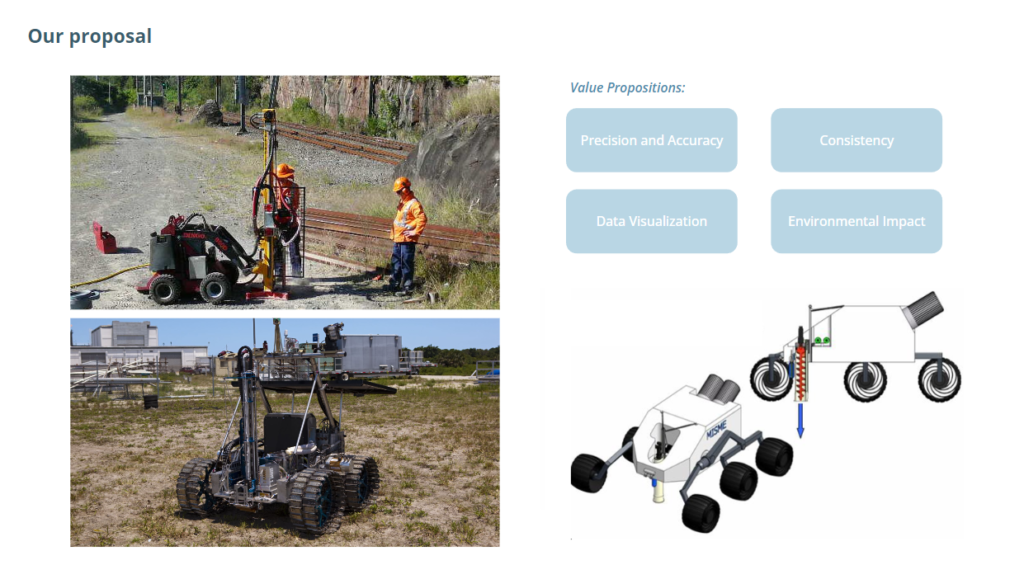In this proposal, our objective is to explore the synergies and interconnectedness of various systems. Specifically, we have grouped together to investigate how coral reef restoration techniques, autonomous rovers, and sustainable foundation systems can collaborate to develop compelling decarbonization proposals.
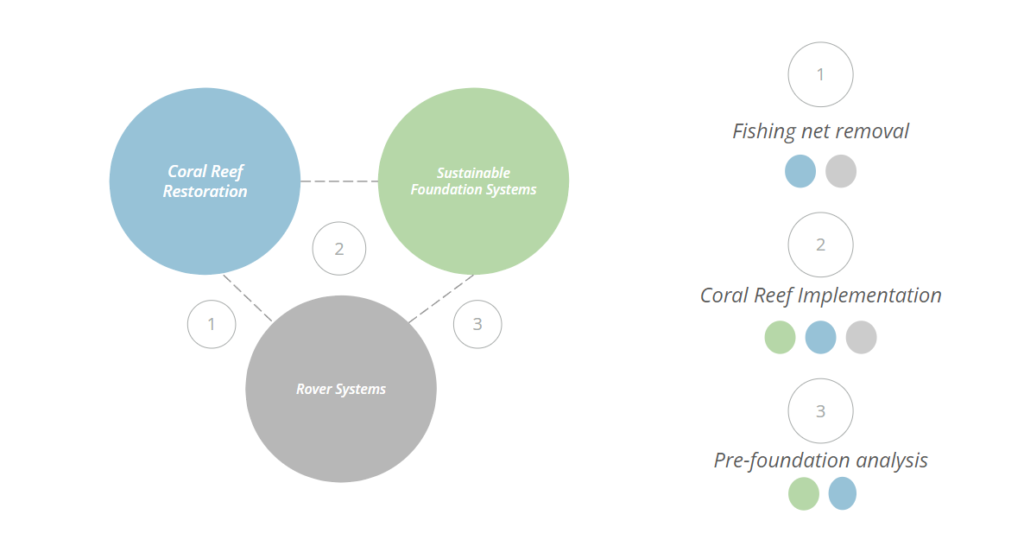
Reef Platform + Rover
Submersive Rovers to detect fishing nets and remove it in Punta de La Mona
In our initiative to preserve marine ecosystems, particularly in Punta de La Mona, we propose the deployment of submersible rovers equipped with advanced sensors to detect and remove fishing nets that pose a threat to marine life. Using the advancements in autonomous vehicle technology, we recognize the opportunity to enhance sustainability and decarbonization efforts by utilizing autonomous rovers for these tasks.
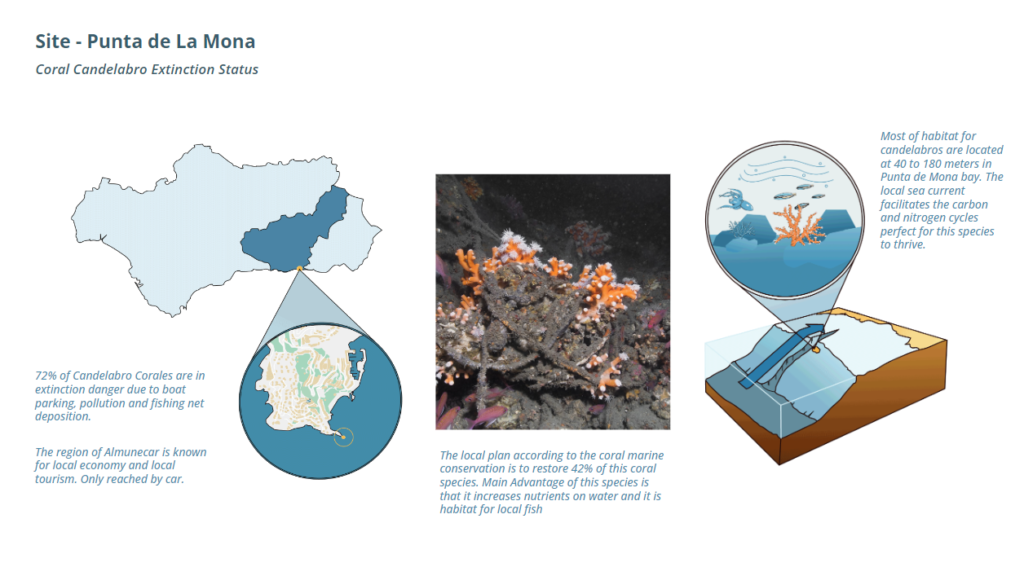
These rovers offer numerous advantages over manual intervention, including increased efficiency, reduced environmental impact, and the ability to operate in challenging underwater environments where human intervention may be impractical or dangerous. Through this approach, we strive to mitigate the harmful effects of human activities on marine ecosystems while actively contributing to their conservation and restoration.
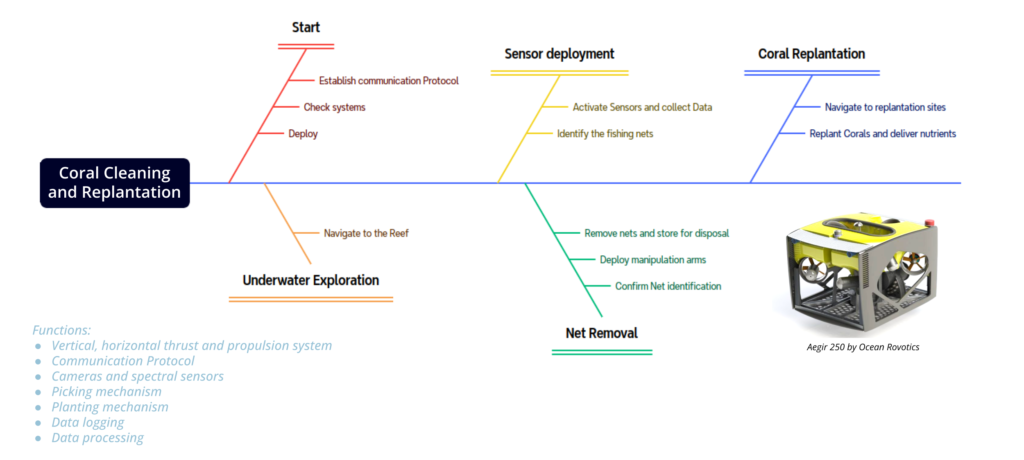
Reef Platform + Foundation Systems + Rover
An Electrical Foundation Company, dedicated to carbon-neutral manufacturing, takes on the responsibility of implementing coral reef foundations
In the scenario of restoring a coral reef in Punta de la Mona, Spain, modular coral supporting systems have been designed, comprising a clay-composite layer atop recycled concrete to minimize environmental impact.
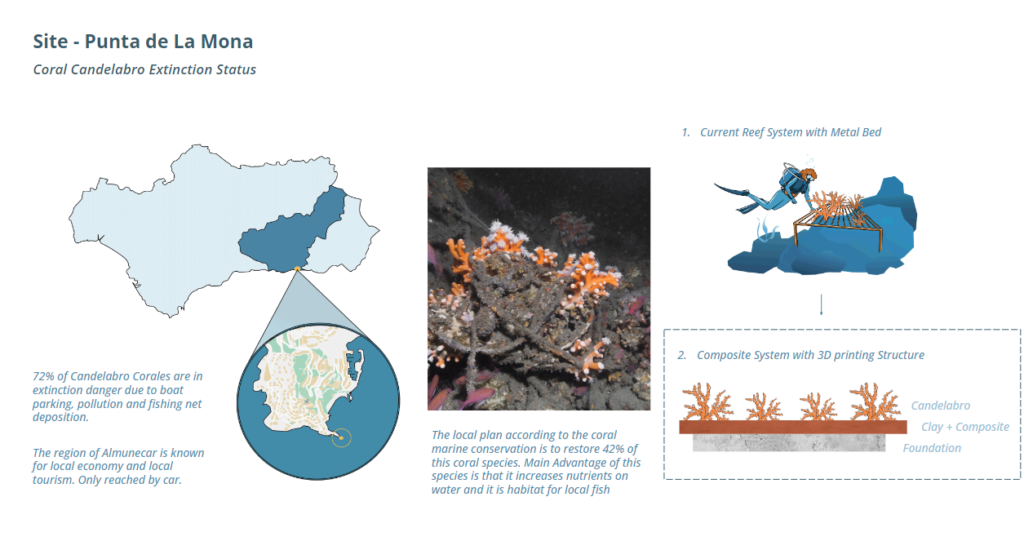
Once the design is finalized, the concrete used for foundations is sourced from demolition debris, manufactured, and transported to the site by the Electrical Foundation Company (EFC). Subsequently, aquatic rovers secure the coral foundation in place. All rovers deployed have access to EFC installations, ensuring 100% clean energy usage, thereby reducing carbon emissions and minimizing human impact.
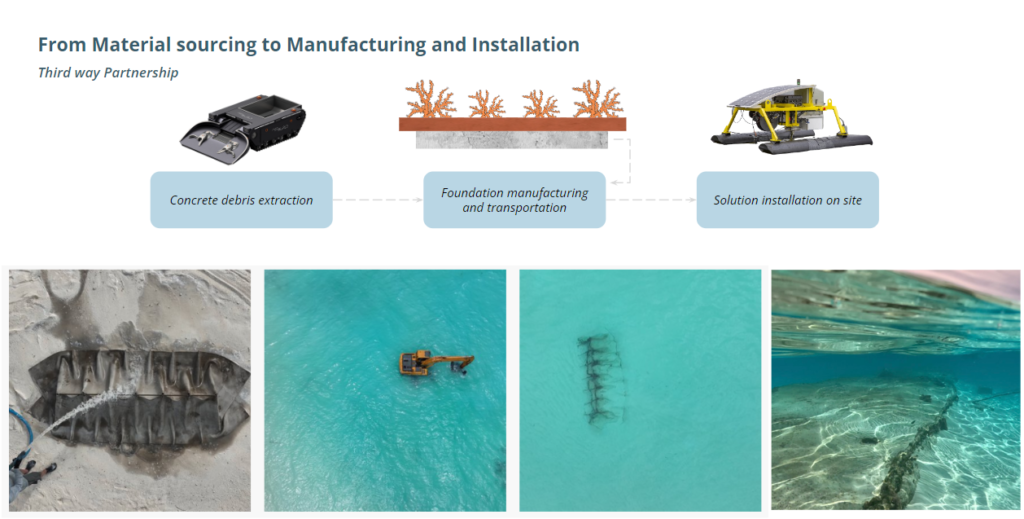
“Growing Islands“, Self-Assembly Lab, Massachusetts Institute of Technology (MIT). Accessed February 15, 2024.
Rover + Foundation System
Robotic solutions for precise soil and ground analysis, enhancing foundation selection and efficiency in implementation
In many countries today, soil analysis often involves digging large holes for in-situ evaluation of soil characteristics, with samples sometimes sent to labs for further testing. This approach aims to assess factors such as soil strength, compressibility, and permeability. However, it’s a highly invasive method that emits CO2 emissions.
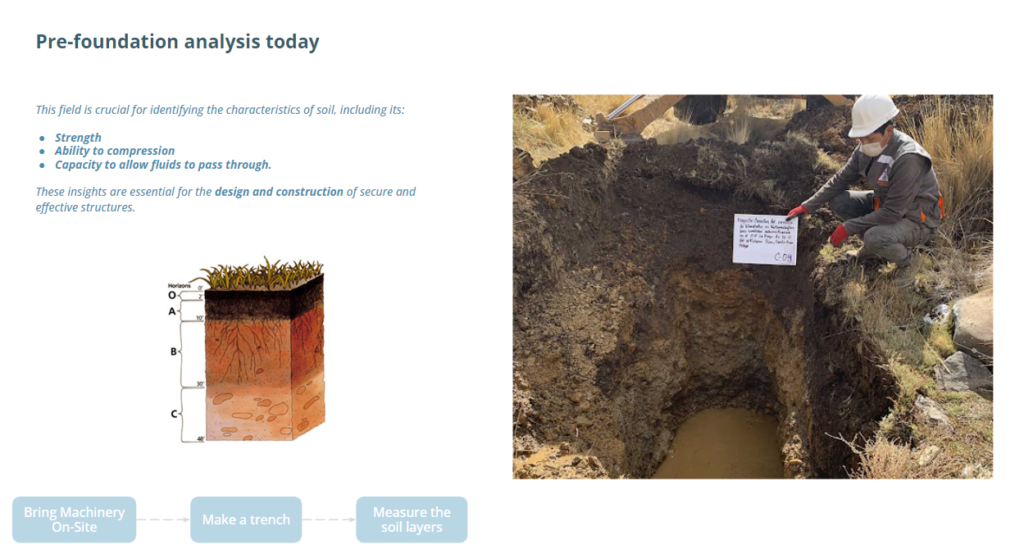
Our proposal introduces a more innovative approach: utilizing electric robots that can be teleoperated or operate autonomously to conduct soil analysis with minimal disruption. These robots are equipped with advanced sensors and technology, allowing them to perform precise measurements and tests to assess soil parameters. The benefits of this approach include:
- Precision and Accuracy: Automated robots utilize sophisticated sensors and technology, ensuring precise and accurate soil analysis results.
- Consistency: Robots deliver consistent soil analysis results, reducing the risk of human error and ensuring uniformity across the construction site.
- Data Visualization: The robots gather and process extensive soil data, providing engineers with detailed insights for informed foundation design decisions.
- Environmental Impact: By precisely assessing soil conditions with minimal disturbance through the digging of small holes, these robots contribute to environmentally conscious construction practices. This approach minimizes environmental damage and promotes sustainability in construction projects.
